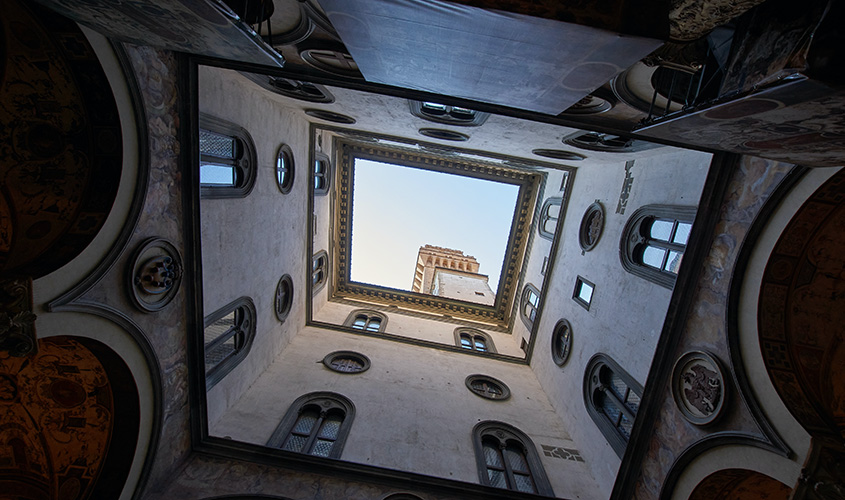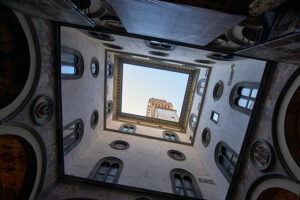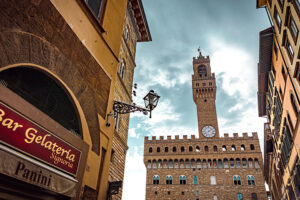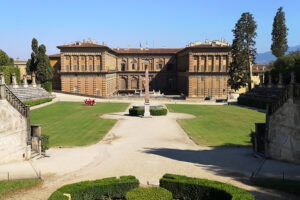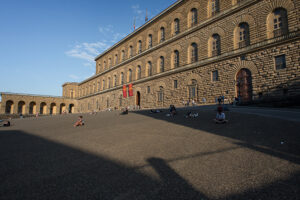The Hall of the Five Hundred: what and where is it?
If you’re visiting or planning to visit, Florence, you’ve probably heard of Piazza della Signoria. Located in the heart of the historical center, this beautiful light-filled square is the center of the city’s public life ever since the Middle Ages, and it hosts Florence’s city hall, Palazzo Vecchio.
About Piazza della Signoria and Palazzo Vecchio
Ever since the early 13th century, Florentines have been strolling across Piazza della Signoria daily, enjoying coffee and apéritifs in its elegant cafés, and meeting friends for a chat in the shade of the Loggia dei Lanzi, an outdoor art gallery that hosts Renaissance sculptures, and of its most iconic landmark, Palazzo Vecchio, which has been Florence’s town hall ever since the 13th century.
Palazzo Vecchio’s Hall of the 500
Needless to say, Palazzo Vecchio’s monumental halls are impressive and crammed with spectacular artwork. But among all the palace’s rooms, there’s one that stands out: the Hall of the 500, Salone dei Cinquecento in Italian.
Where the Hall of the 500 got its name
The first hall called “of the 500” was built at the end of the 1400s to host the meetings of the newly-born council of the Republic of Florence (1496 – 1512). The Republic’s council, in fact, counted 1000 members, who met in two turns, hence the “Hall of the 500”. Actually, it was used as a meeting room only until 1512, when the Medici family came back to rule over the city, and then again between 1527 and 1530, during the second Republic. After that, once the Medici had their hands firmly on the city again and until 1540, the Hall was used to accommodate the palace’s guards.
Palazzo Vecchio and Vasari
In 1540, Cosimo I de’ Medici, ruling lord of Florence and patron of the arts, moved into Palazzo Vecchio turning the palace into his family residence and center of the government. He wanted a beautiful, impressive, and ceremonial place to live and work in, so he called Vasari to renovate and redecorate.
About Giorgio Vasari
Ever heard about Giorgio Vasari? Much more than a painter, or an artist, he was the perfect representation of the all-round, complete, Renaissance genius: architect, painter, explorer, and one of the world’s very first “journalists”, Vasari invented art history by writing biographies of the most important Italian Renaissance artists. Plus, he’s the one who created and built the famous Vasari Corridor that runs above the rooftops from the Uffizi to the Pitti Palace!
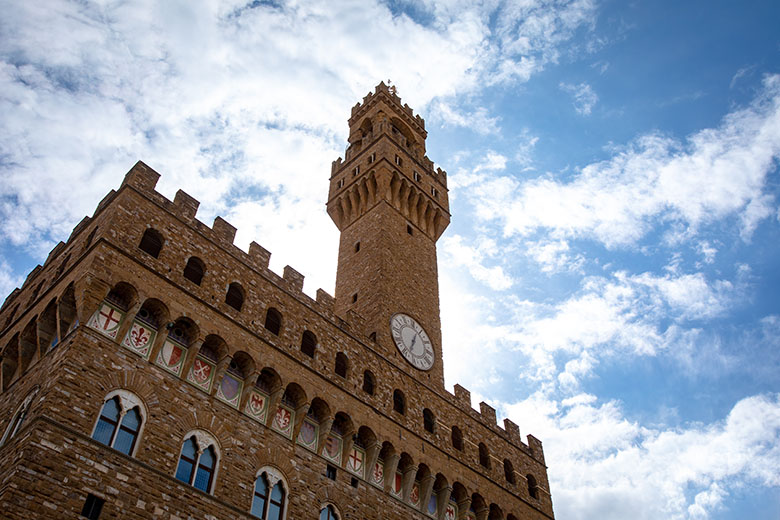
Palazzo Vecchio and Vasari: the Hall of the 500
Such a greatly accomplished artist and connoisseur of the arts couldn’t do anything but create a masterpiece, and so he did. Entering the 53-meter-long, 22-meter-wide Hall of the 500 you’re bound to gasp in awe. The whole room is lined with frescoes by Vasari and his apprentices that depict vividly colored, life-like, tumultuous scenes of battles. The stories that lie behind the paintings are those of Florence, and its greatness: there’s the war against Pisa, that against Siena, and even Cosimo I himself, painted as a god, right in the middle of the ceiling.
The Hall of the 500’s amazing gold-paneled ceiling
Whatever you do when you’re inside the Hall of the 500, make sure you raise your eyes to the ceiling. Vasari had Michelangelo help him plan it, and the result is nothing short of extraordinary: 34 gold-leaved panels containing vibrant, dramatic frescoes.
Visiting the Hall of the 500
The Hall of the 500 is part of the Palazzo Vecchio Museum, so to visit it, all you need to do is purchase a ticket to the Museum. Opening hours are:
- Monday/Tuesday/Wednesday/Friday / Saturday /Sunday from 9 AM to 7 PM
- Thursdays from 9 AM to 2 PM
The last admission is one hour before closing time
However, seeing as Palazzo Vecchio is Florence’s town hall and that the Hall of the 500 often hosts important events, I suggest you always check the official Musei Civici Fiorentini website to make sure it’s open to the public. Plus, in peak tourist season, you’ll be better off if you get reservations too.

